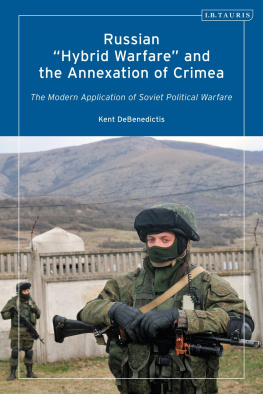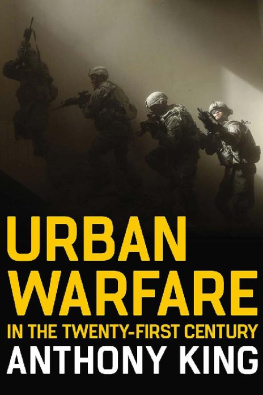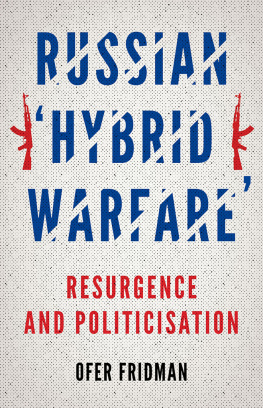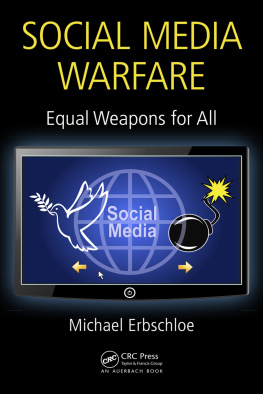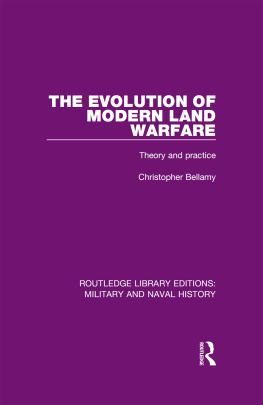
Creating Chaos

2018 Larry Hancock
All rights information:
Visit our website at www.orbooks.com
Published by OR Books for the book trade in partnership with Counterpoint Press.
Distributed to the trade by Publishers Group West.
All rights reserved. No part of this book may be reproduced or transmitted in any form or by any means, electronic or mechanical, including photocopy, recording, or any information storage retrieval system, without permission in writing from the publisher, except brief passages for review purposes.
First printing 2018
Cataloging-in-Publication data is available from the Library of Congress.
A catalog record for this book is available from the British Library.
ISBN 978-1-944869-87-8 paperback
ISBN 978-1-944869-88-5 e-book
Typeset by Lapiz Digital Services, Chennai, India.
Contents
Introduction
D iplomacy, foreign relations, and the conduct of both political and actual warfare between states are addressed within the academic discipline of political science as well as being part of the education and training of Foreign Service and diplomatic personnel. Beyond academia, the practices of the darker and covert side of statesmanship and foreign relations are of practical concern in the day-to-day work of national intelligence communities around the world.
Creating Chaos focuses on and explores the dark side of statecraft, the covert use of power in international relations. It specifically deals with activities and practices by which one nation targets anotherconsidered as an adversary or as a threatwith practices of secret, deniable political warfare. Elements of this darker side of foreign relations can be found in one of the earliest treatises on statecraft, The Prince , a sixteenth-century work by diplomat Niccol Machiavelli. Much of Machiavellis analysis offers direct, highly pragmatic and notably immoral recommendations for successful rulers. As an example, he maintains that the first priority of any ruler should be a continual study of the art of war; its practice represents the sole art mandatory for a ruler.
While Machiavelli discusses certain aspects of deniable action, such as the suborning of nobles (whom he then describes as obviously unreliable, to be dealt with cautiously or eliminated once their aid is no longer needed) much of his rather infamous reputation derives from his avocation that a successful ruler must know both right and wrongand choose to do wrong whenever circumstances dictate: Hence it is necessary for a prince wishing to hold his own to know how to do wrong and to make use of it or not according to necessity.It will be found that something that looks like virtue, if followed would be his ruin, whilst something else which looks like vice, yet followed, brings him security and prosperity.
We will find that particular attitude appearing continually in this exploration of both historical and contemporary political warfareas relevant to the decisions of presidents as to princes, kings, and queens. However, other of his admonitions appear to have been more often ignored than not. Machiavelli cautions that no ruler can ever securely govern a hostile populace, simply because those in opposition will outnumber those content with his leadership. Also, a ruler who obtains sovereignty through the assistance of foreign nobles will always be dealing with those who consider themselves his equals; such a ruler will govern with far more difficulty than if he had acquired sovereignty by popular favor. The most successful ruler can maintain himself easily, simply by ensuring the people are not oppressed.
As we will see in our exploration of political warfare during the Cold War era, those particular points often seem to have been ignoredeven if they were highlighted by the individuals directly involved in successful operations. One of Americas first covert foreign regime change efforts during the Cold War was overseen by Kermit Roosevelt Jr., the senior Central Intelligence Agency officer in its Middle East division. Roosevelt was deemed to have directed what was at the time considered to be an extremely successful projectthe Iranian coup of 1954. When debriefed on the operation, Roosevelt was adamant that the CIA must never attempt another such covert project unless both the army and the majority of the people in the targeted nation wanted what the United States itself desired as the outcome. Roosevelt pragmatically concluded that if that were not certain, then covert political warfare should not even be considered as an optionthe president should just send in the Marines. Pragmatic advice, given by someone in a position to know, which seemingly fell on deaf ears.
Creating Chaos is not a book about Cold War espionage, deniable military operations, or military warfare. Instead it is first a detailed examination of covert political warfare as it was conducted both by both the United States and Russia during the twentieth century, the era of the ideological Cold War between the Eastern and Western Blocs. It then moves into the twenty-first century, exploring the transition period which followed the collapse of the Soviet Union and contemporary political warfare practices in what has become a role reversal in the activities of the two nations.
Some readers may be surprised to find that it was the United States, rather than Russia, which most frequently turned to major covert political action projects during the Cold War, focusing on reversing Soviet geopolitical influence first in Eastern Europe and then globally. Beginning in the late 1940s and continuing through the 1980s, American political warfare was highly focused, conducted by special task groups with relatively short term, disruptive missions.
Initially such projects involved specific activities intended to create internal chaos and destabilize Eastern European nations which had come under Russian control following World War II. Specialized CIA psychological warfare and paramilitary groups were formed to conduct deniable operations, with the intent of encouraging and supporting internal resistance movements, and creating schisms which would undermine Russian influence. Following that early period of containment efforts, operations became much more far ranging, responding to what were perceived as potential Soviet beachheads in nations around the globe. Much more aggressive practices, including regime destabilization, surrogate warfare, and actual regime change came into play to remove any such beachheads that did come into place.
The full story of American deniable political warfare has become visible through the massive release of both State Department and Central Intelligence Agency documents, the most covert elements being forced into public scrutiny by a series of congressional inquiries and supplemented by aggressive citizen use of the Freedom of Information Act of 1966, by which agencies are forced to respond to public records requests.
It is now possible to examine and describe the decision process which led America to commit to practices in which it had little experience, practices totally outside the rule of law and international legal agreements. Beyond that, the practices themselves can be dissected, illustrated by specific intervention projects and traced though the evolutionary process which in many cases led from simple economic and political action intended to destabilize targeted regimes to formal projects intended to bring about actual regime change. In several instances this involved covert paramilitary action using deniable American military assets and surrogate agents and fighters.
Next page


